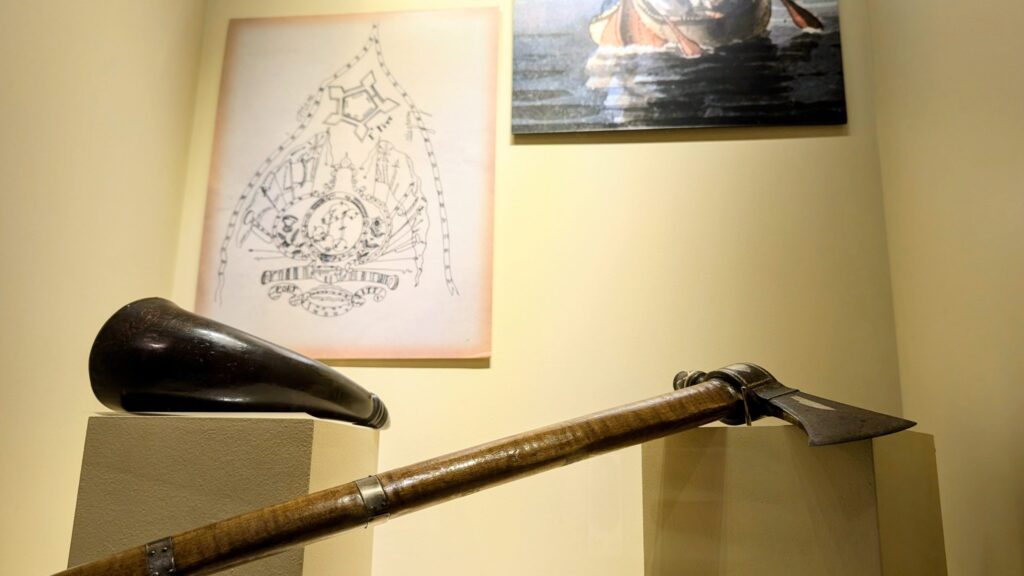Three hundred years ago, before the Seven Years’ War, the building of Fort Pitt and the American Revolutionary War, the Lenape, Haudenosaunee, Shawnee and Seneca-Cayuga peoples settled along the curving riverbanks of southwestern Pennsylvania.
DJ Huff, a Seneca and Fort Pitt Museum educator, said people back then didn’t distinguish between the Ohio and Allegheny rivers — they lived along one big river, the Ohio, or the Beautiful River.
“To us, all rivers are the same,” Huff says. “It’s interesting to hear the languages and how people value rivers. Even the French call the Allegheny by its Iroquois name, ‘La Belle Rivière,’ or ‘The Beautiful River.'”
Photographs, paintings and artifacts from these Native American groups will be on display for the first time in the exhibit, “Homeland: Native Peoples of the Alleghenies,” which opens Saturday, June 22, at the Fort Pitt Museum.
Mike Burke, the exhibit’s lead curator and deputy director of the Fort Pitt museum, said the exhibit explores why Native Americans settled here, how they lived and the trauma they experienced being forced from their homes.
“Western Pennsylvania was part of the homeland for all of these cultural groups,” Burke says. “Three hundred years ago, this year, in 1724, the Lenape people began settling in the upper Ohio Valley. They established a village up the Allegheny River from here at Kittanning, and also a village within the city limits of Pittsburgh called Chanopinstown, now known as Lawrenceville.”
“When these groups immigrated here, they all spoke different languages and dialects, and yet within a few years, they all started calling this place Allegheny.”
At the front of the exhibit is a 14,000-year-old arrowhead that shows how long First Nations people have lived in the area.
“If you think about it in a 24-hour system, if they showed up at midnight, people in Europe would arrive at about 11:27 p.m.,” Burke said.

 DJ Huff, a member of the Seneca tribe, speaks about preserving language and culture in front of a yet-to-be-installed portion of “Home: Native Peoples of the Alleghenies.” Photo by Roman Fradio.
DJ Huff, a member of the Seneca tribe, speaks about preserving language and culture in front of a yet-to-be-installed portion of “Home: Native Peoples of the Alleghenies.” Photo by Roman Fradio.
Also on display are an 18th-century Lenape spoon that has been passed down through generations, an early tomahawk made by local gunsmith John Small, a Seneca-Cayuga boy’s dance costume and a contemporary Seneca art piece that Huff said was “made a few months ago,” illustrating the continuing vibrancy of the culture.
While teaching school-age children last fall about the fur trade and local Native American life, Huff asked them, “Where do you think these people are now?”
“They’re dead,” he recalled some saying. “They were killed. They were exterminated.”
“One of the biggest things I want to get across to people is that the Native Americans who lived here in the 18th century are still here,” Huff said. “I want people to understand more about the origins of Pittsburgh, the Native Americans who lived here, what trade was like in the 18th century, and that that culture continues today.”
“Seneca people and non-Native people working together, and that’s what this exhibit is about — working together to educate people about a particular way of life.”
The Fort Pitt Museum is operated by the Heinz History Center. It is located at Point State Park, 601 Commonwealth Place, and is open daily from 10 a.m. to 5 p.m.


